An ultramarathon in a shopping mall
In 1984, Peter Goodsell of the Road Runners Club1 hit upon the idea of staging a 24-hour race in a shopping centre. The Central Milton Keynes shopping centre, which had opened in 1979, was the longest shopping mall in the world. The ideal place for an indoor ultramarathon surely?
Until 1994, nearly all shops in the UK were closed on Sunday by law. Small “corner shops” and newsagents, garden centres, chemists and and garages were allowed to open but large shops were not. This meant that the big shopping centres that had proliferated in the 1970s and 80s stood empty from 6pm on Saturday evening until the following Monday morning. The size of the Milton Keynes shopping centre meant that it offered an indoor circuit about 875 metres long, probably the longest indoor circuit ever laid out2. It also provided protection from the elements. As the race took place in February, an outdoor location might not have suitable. Having toilets right at the side of the course was convenient as it meant less time was lost.
But there were some downsides. The race could not start until 8pm, two hours after the shops had closed. Some competitors remarked that it became quite cold during the night3. And the shopping centre had polished marble floors which made for a very hard surface to run on.
Randi Bromka, who was representing the USA, said this race was “My worst showing at a 24 hour. The marble floors took an early toll on my legs which were ‘trail trained’.”4 Eleanor Adams commented that it was “awful on the shins and feet.”5 The floor became slippery if drinks or food were spilled.
It was also “a much lonelier race than usual” for competitors used to running 24-hour track races. On a 400m track you can always see what’s going on and runners sometimes form small groups. The longer circuit round the shops meant that runners were more likely to be on their own and couldn’t see runners on other parts of the course.6
The Milton Keynes Indoor 24-hour Ultra in the 1980s
The Milton Keynes ultramarathon took place three times before it hosted the IAU Championships in 1990. Eleanor Adams competed in all three of those races.
1984 – Adams was the only woman in the inaugural race, running 121 miles, 1268 yards (195.891km) and finishing sixth. She became the first woman to run over 120 miles indoors. Mike Newton (GB) was the first finisher, running 232.823km.
1987 – Adams was the first female finisher, in second place behind James Zarei (GB/Iran). She set an all surfaces 24-hour world best with 141.21 miles (227.261km). Later that year, this distance would be surpassed by Hilary Walker who ran 230.618km in a 24-hour road race.7
1989 – Adams finished third with 142 miles, 1602 yards (229.992km), a new world indoor best, behind Dick Tout of New Zealand (262.585km), who also set a new world indoor best, and Jean-Pierre Delhotal of France (238.778km). Andy Milroy noted in his report in the Road Runners Club newsletter that Adams had surpassed all her own previous indoor bests from 30 miles upwards. She had become the first woman to run 50 miles in under seven hours (6:57:19) and to run 100km in under nine hours (8:52:26) indoors.8
The 1990 Milton Keynes 24 Hour Ultramarathon
In 1987, the International Association of Ultrarunners had held its first 100km Championships and it had been held annually since then. The popularity of the 24-hour race format led to the IAU establishing an international championship event. The IAU chose Milton Keynes as the host event for the inaugural International 24 Hour Championships.
The race was also designated as the first UK and English 24 Hour Championships under the auspices of the British Amateur Athletics Board and the Amateur Athletics Association (the English governing body for men’s athletics).9
The race was organised by John Foden10, Race Director, and John Legge, Chairman of the Road Runners Club.
The race attracted a large international field including athletes from Australia, New Zealand, USA, West Germany, France, Switzerland, Hungary, Yugoslavia, Finland, Belgium and Russia. Andy Milroy described it as “the greatest field ever assembled.”
It took place on Saturday 3rd and Sunday 4th February, starting at 8pm.
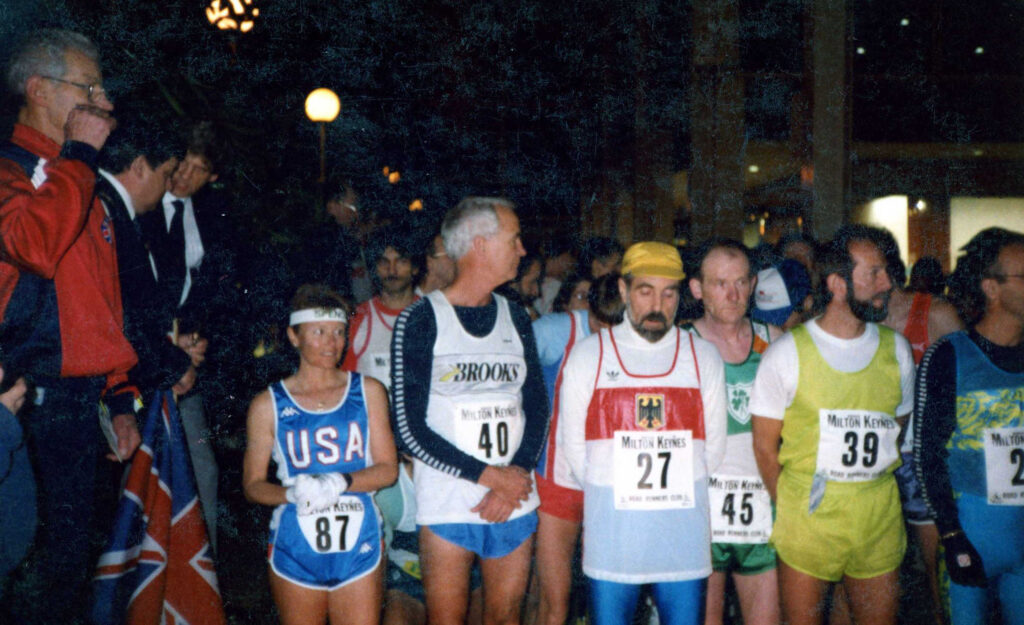 Start line photo: John Foden is on the left wearing red tracksuit top. Randi Bromka (87). Second row Eleanor Adams (looking down, red shorts), Donald McDonald (wearing Irish vest). Photo courtesy of Yuri Esperson (behind Bromka, wearing red and white).
Start line photo: John Foden is on the left wearing red tracksuit top. Randi Bromka (87). Second row Eleanor Adams (looking down, red shorts), Donald McDonald (wearing Irish vest). Photo courtesy of Yuri Esperson (behind Bromka, wearing red and white).
Adams came into the race as the holder of the 24 hour world best of 149.23 miles (240.169km) which she had set at the HI-TEC International Melbourne 24 Hour track race in August the previous year.
In 2001, Eleanor Robinson (formerly Adams) was inducted into the IAU Hall of Fame. She wrote an article listing her top ten performances. The 1990 Milton Keynes races was third on her list. This is her account of the race, written in 2001.
The 24 hour race is truly an ultra event; to me much more so than the 100km. All the characteristics of a true ultradistance runner are to be found in events of 24 hours and above whereas I regard the 100km as being more akin to a marathon.
The 24 hour at Milton Keynes had been run several times previously and I had always run well there. This first, and so far only, International 24 Hour Championship event, would be the first appearance of a GB team. Some years previously, a journalist had asked me what my ultimate desire was regarding ultradistance events and I had replied that I would dearly love to be able to compete in a British vest but that I could never see it happening. Due to the efforts of John Legge, I had been awarded a GB vest as an individual the previous year, which I proudly wore in Melbourne for the 24 hour race in 1989. This though would be the first occasion when teams were selected.
The number of countries sending teams was limited but with all the best 24 hour runners in the world present the standard was formidable. The same was also true for the 100km Championships at that time.
My aim was to become world champion but also I wanted to push up the record and hoped to reach 150 miles which I had only just missed 6 months earlier in Australia. As this event was held in the UK, I had the help of Nigel, my then husband-to-be, and my eldest son Stephen who had been crewing for me since he was 8 years old. At 14 years old he was probably one of the most experienced handlers present.
I took only drink – water or hot tea – and occasionally a yoghurt. I had a super race with no particular problems until suddenly, without any warning, I was violently sick. I had only 15 miles to do to complete 150 miles with 3 hours to go. Just as I was feeling that at last I would do it…..disaster. I lost too much time, became very cold and my chance had gone. However, the Championship was mine. This, my first, was very special.
There was no big celebration or presentation afterwards; just a warm sense of achievement that I would keep forever. I was convinced that I would soon get to 150 miles but alas it was not to be.
IAU Newsletter, March 2001
Eleanor Adams 24 Hour World Champion 1990
Adams, who was 42, finished in seventh place with 147 miles 1408 yards (237.861km). This was the second furthest distance run by a woman as she still held the world best for the distance, set at Melbourne in 1989. The next woman to finish was Marianne Savage of Centurion Running Club in thirteenth place with 228.112km.
Adams set a new 100 miles personal best of 14:43:4011 and a 200km world best of 19:00:31.
In October that year Adams became the IAU 100k World Champion at Duluth. She remains the only person to have been World Champion at 100k and 24 hours in the same year. The IAU did not hold another 24 Hour World Championships until 2001. European Championships were held from 1992.
IAU 24 Hour International Championships 1990 results
In the men’s race, James Zarei, the 1987 winner, was in the lead at the start of the race but after five hours Don Ritchie had taken the lead. Ritchie held onto the lead for the rest of the race. He set new indoor world bests for 100 miles, 200km and 24 hours.12
The top ten finishers were:
- Don Ritchie (Scotland) 267.543km
- Bryan Smith (Australia) 251.310km
- Roy Pirrung (USA) 248.125km
- Helmut Schieke (West Germany) 246.848
- Max Courtillon (France) 240.790
- Jean-P Delhotal (France) 239.006
- Eleanor Adams (England) 237.861
- Dave Cooper (England) 237.087
- Peter Samulski (West Germany) 234.385
- Hans-M Erdmann (W Germany) 233.492
Adams’ middle brother, Richard Puckrin, also competed finishing with 64 miles 296 yards.
Andy Milroy commented:
“Overall 15 runners ran over 220km, 27 over 200km and 41 over 100 miles – simply the greatest 24 hour result yet”.
Adams had finished second behind Bryan Smith of Australia in the Melbourne 24 Hour track race in 1989.
The results published in the Road Runners Club newsletter listed 54 finishers, 12 of whom were women (this is probably the complete list). The other women listed were:
13. Marianne Savage (England) 228.112km
17. Monika Kuno (West Germany) 218.012km
20. Angela Mertens (Belgium) 209.005km
28. Christine Gray (England) 197.619km
31. Sandra Barwick (New Zealand) 186.993km
33. Randi Bromka (USA) 182.966km
34. Renate Nierkens (West Germany) 180.758km
35. Marie Bertrand (France) 173.833km
42. Kathy Crilley (England) 155.746km
43. Kim Talbot (Australia) 151.461km
51. Sue Trapp (USA) 79.232km
Footnotes
- The Road Runners Club was the leading organisation promoting ultrarunning in the UK for several decades from its formation in 1952.
- The Milton Keynes Indoor 24 Hours, Andy Milroy, Road Runners Club newsletter, April 1984
- Lion Caldwell of the USA in Ultrarunning Magazine, May 1989: “The course was more like running in an unheated, covered stadium than a US shopping mall.”
- Randi Bromka Young commenting on the thirtieth anniversary of the race on Facebook, February 2020. In an interview with the Starting Line 1928 podcast from February 2023, Randi Bromka Young talks about her experience at the race.
- Eleanor Robinson, email 17th February 2021
- Eleanor Robinson, email 17th February 2021. Bernard Jarvis, a member of Holme Pierrepont Running Club, who competed in the 1989 race, phone interview February 2021.
- Distances are from the Deutsche Ultramarathon Vereinigung website. World best information from 1987 Ultramarathon Review, Andy Milroy, Road Runners Club newsletter, April 1988.
- The Milton Keynes 24-Hours, Andy Milroy, Road Runners Club newsletter, August 1989
- The Fourth Milton Keynes Indoor 24 Hour Race, Andy Milroy, Road Runners Club newsletter, April 1990
- John Foden (1926-2016) was very much involved in race organisation at this time. A member of the Road Runners Club, he was also a member of my club, Holme Pierrepont Running Club. Foden is best known as the man behind the first Spartathlon in Greece, held in in 1983, which Eleanor Adams competed in. He also organised 100km races around the lake at the National Water Sports Centre at Holme Pierrepont, Nottinghamshire from 1989-1995. He was an ultrarunner himself competing in many races including London to Brighton and 100km races.
- Eleanor Adams’ 100 mile time of 14:43:40 stood as the GB all surfaces record for 31 years until it was broken on 24th April 2021 by Samantha Amend who ran 14:34:03 at the Centurion Running 100 Mile Track race in Ashford, Kent (record subject to ratification).
- Don Ritchie becomes world champion after 15 years of 24 hours!, Adrian Stott, Scotland’s Runner, April 1990.
Notes
Read about Eleanor Adams/Robinson’s other top ten performances:
1984 New York 6 Day Race
1984 Colac 6 Day Race
1986 Westfield Sydney to Melbourne Race
1987 The first Badwater Race
1989 Melbourne 24 Hour track race
1990 & 1991 IAU 100km World Championships
1994 Telecom Tasmania Run
1998 Nanango 1000 Miles Track Race
and British women’s success at the IAU 100km World Championships
Another race that did not make it into the top ten:
1983 The first Spartathlon
Thank you to Eleanor Robinson for lending me copies of the Road Runners Club and IAU newsletters.
Thank you to Adrian Stott, Randi Bromka, Bernard Jarvis and Yuri Esperson for additional information and photos.
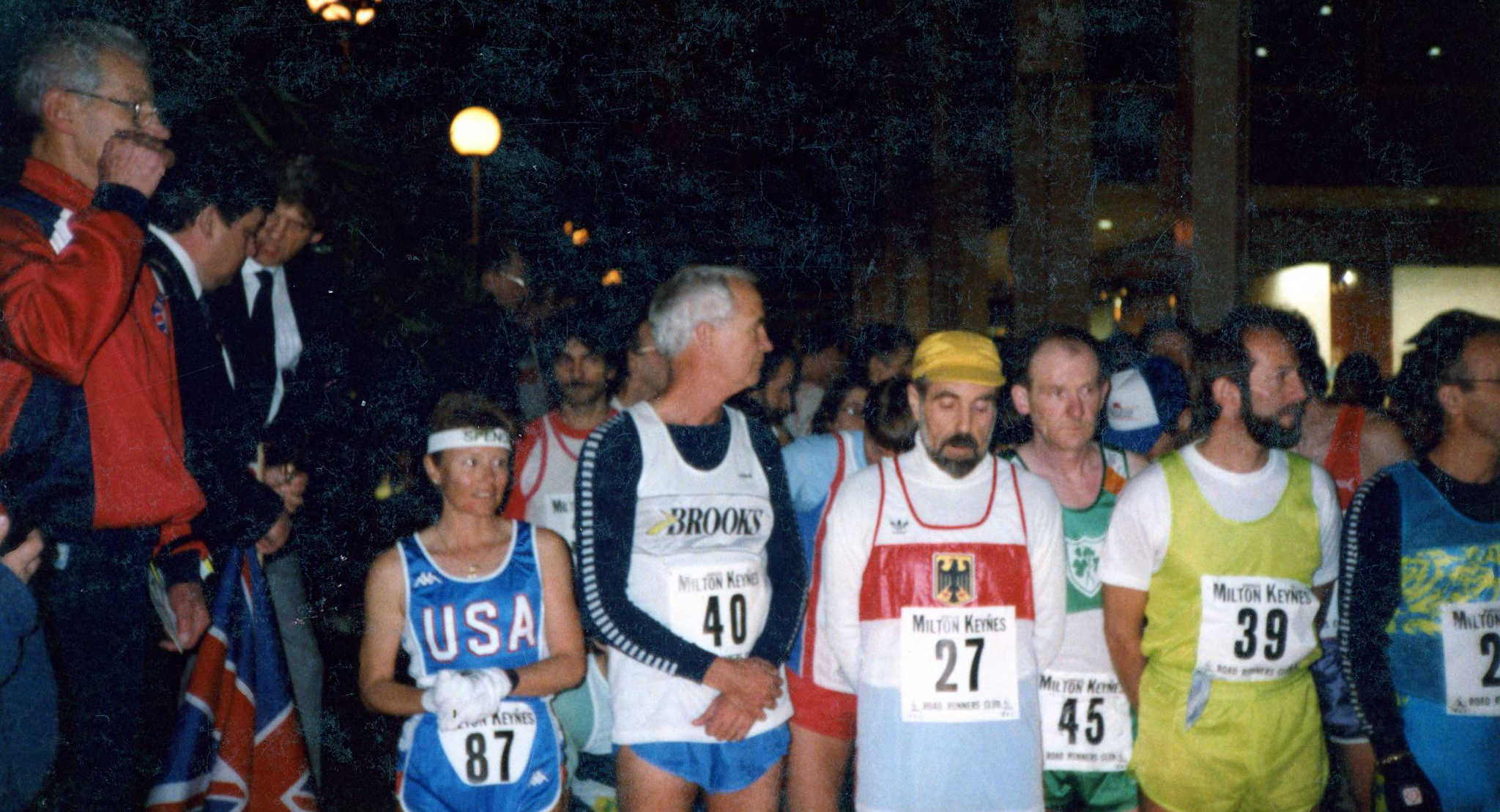

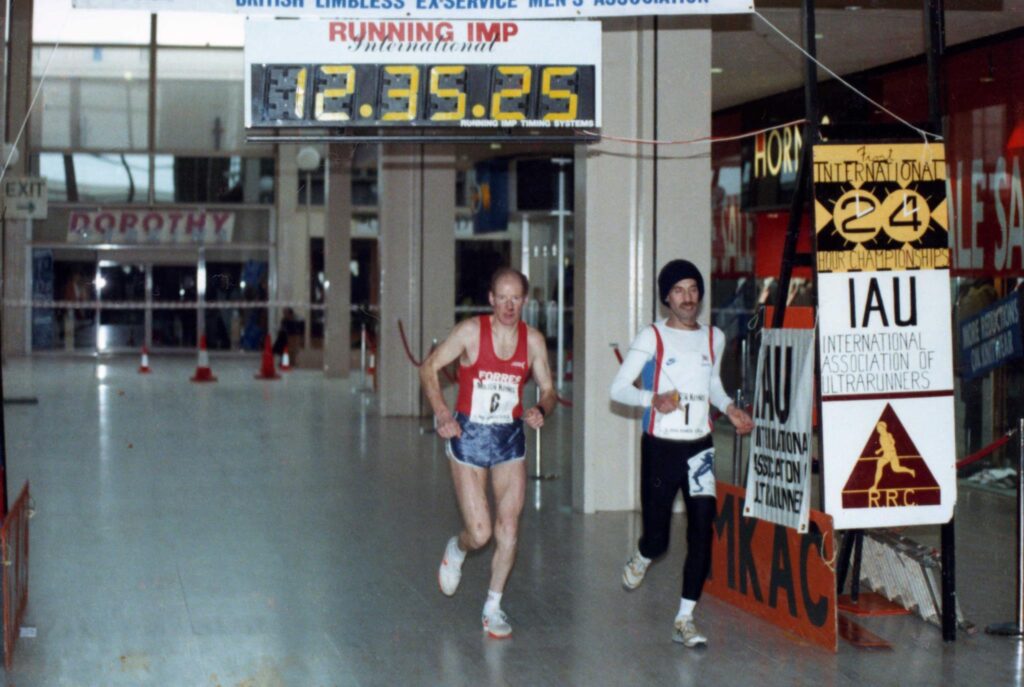
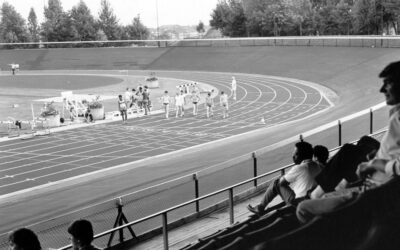
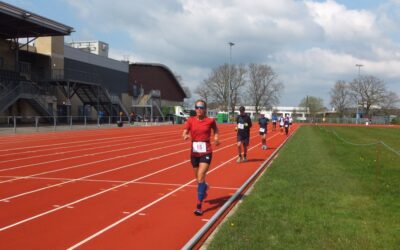
I have known Eleanor some years thought I knew her well, I have trained with, not the ultra distances I might add. Eleanor always gave her best running as well as organising races . Well to cut things short this lady is the best sports person around and should be recognised for her services to the road racing. Eleanor pleasure to know you hope to see you around soon, Legend.
Thank you for posting Tony. I think we may have met at a Summer League race (seems an age ago though). I very much agree with you about the recognition. I’ll pass on your comments to Eleanor. Katie